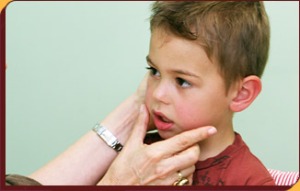Blog
What is PROMPT Therapy?
PROMPT is an acronym which stands for Prompts for Restructuring Oral Musculature Phonetic Targets. It is a tactile-kinesthetic approach which involves touch cues to the patient’s articulators. The speech-language pathologist uses touch to manually guide patients through the production of a target sound, syllable, word, phrase, or sentence. This technique embodies neuromotor principles and helps to develop motor control and proper oral muscular movements. Sometimes traditional verbal and visual models aren’t enough to correct articulation. PROMPT incorporates visual, auditory and tactile modalities which allows patients to feel where their articulators should be for correct pronunciations. PROMPT also helps reduce unnecessary muscle movements such as jaw sliding or inadequate lip rounding.
Who can benefit from PROMPT?
PROMPT can be used to treat a wide variety of communication disorders. It is most often employed when treating children with articulation impairments, phonological disorders, motor planning disorders (ie. apraxia), and language delays. Children with hearing impairments can improve their speech by feeling where their articulators should be instead of having to rely on listening for the sounds. PROMPT also may be a useful technique in the treatment of acquired communication disorders, such as aphasia and dysarthria.
Where are PROMPTs applied?
PROMPTs are designed to help patients get a feel for the manner and placement of muscles to produce a target. Therapists use their fingers to gently manipulate muscles of the face, lips, and the mylohyoid muscle (behind the chin). Tactile cues are also used to prompt voicing (lungs and larynx), jaw grading (mandible), and nasality (nose).
Who can practice PROMPT therapy?
Speech-language pathologists must be trained in PROMPT in order to use it properly. All of the therapists at Long Island Speech and Myofunctional Therapy are PROMPT trained!
For more information about PROMPT visit: http://promptinstitute.com/index.php
-Nicole C.





